Let’s face it guys, the Philippines isn’t short on amazing eats. But, there’s one dish that holds a special place in the Filipino heart (and stomach) – lechon. This isn’t your limp, supermarket rotisserie job. We’re talking the whole hog, slow-roasted over charcoal pits until the skin cracks and the succulent meat is to die for.

A Dish with a Storied Past: Tracing Lechon’s Roots
The history of lechon is a bit murky. Some say it harks back to pre-Hispanic times, where wild boars got the spit-roast ‘inasal’ treatment. Others blame (or credit?) the Spanish for the name, a nod to their “lechona” dish. Whatever the origin story, lechon transcends borders. The first time I came across it, was in Chetumal, Mexico at a bustling market where it is marinated with a mixture of sour orange and vinegar, then oven-baked and served in either taco or torta form.
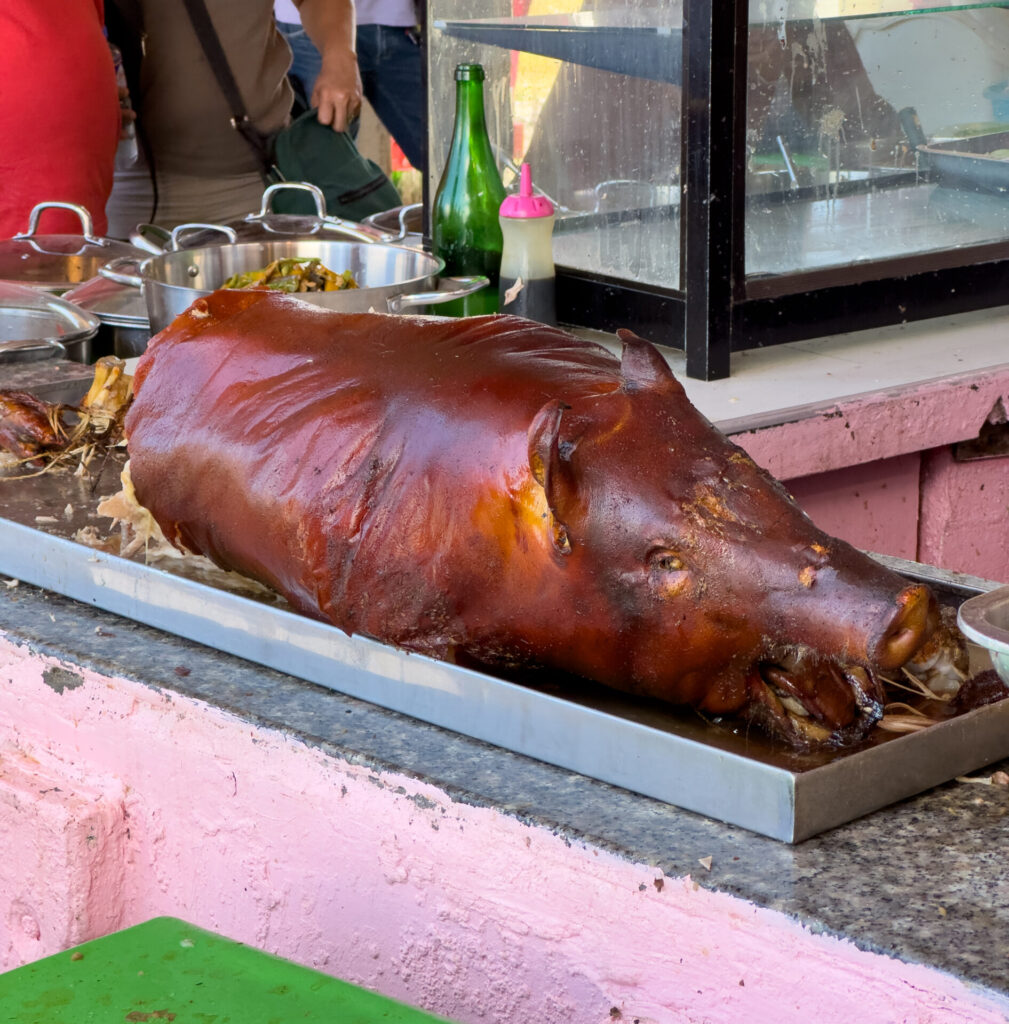
A Regional Affair: Some Variations of Lechon In The Philippines
You’ve gotta trust me, lechon hits differently in the Philippines. The first whiff of that roasting pig in a crowded Filipino market, the sights and sounds – it’s a full-on sensory experience. From what I’ve experienced, every region does lechon a little differently. Some keep it simple with a soy sauce and calamansi marinade that lets the smoky goodness shine. Others take a different approach, stuffing the pig with fragrant lemongrass stalks, fiery chilies, and enough garlic to knock out a vampire convention.
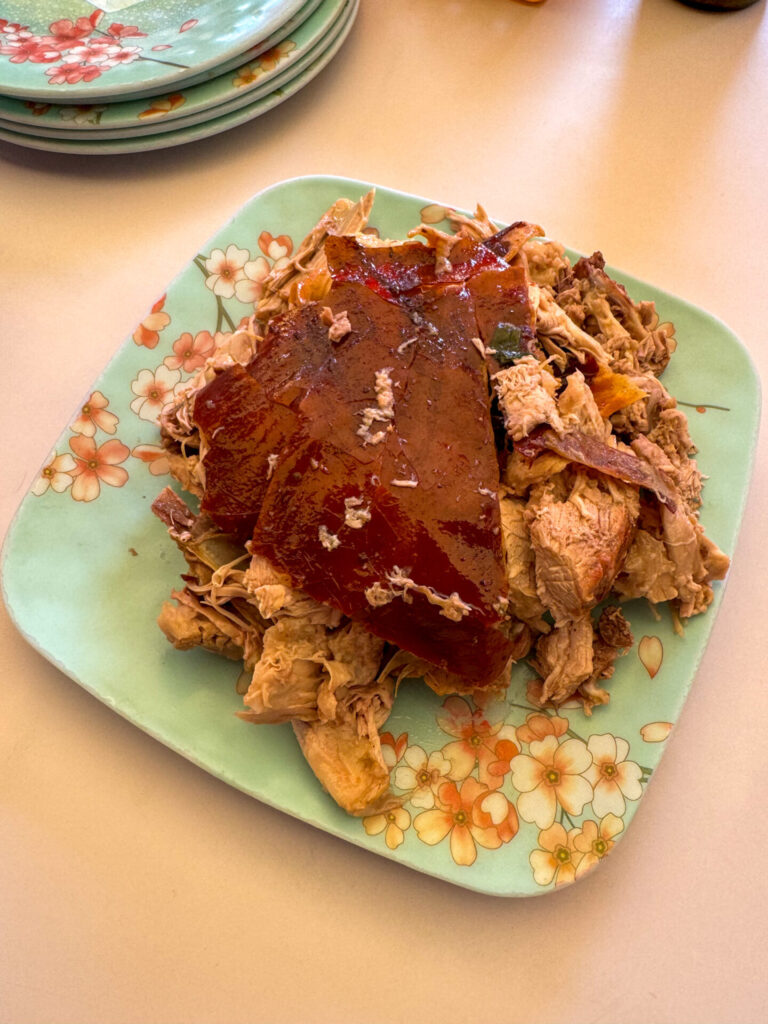
The Star of the Show: The Allure of Crispy Skin
The real star of the show, though? That crackling skin. It’s a golden testament of crispy perfection, displaying the lechonero’s skill. Each bite is a perfect contrast of textures – a shattering crunch giving way to tender, juicy meat. Dunk it in that tangy vinegar for a flavor bomb, or pair it with some fluffy white rice for pure comfort food goodness. Feeling adventurous? Chop it up and turn it into sizzling sisig, the ultimate bar food; but no matter how you eat it, lechon is pure porky bliss.
The Many Different Forms of Lechon in the Philippines
Lechon isn’t just for special occasions, either. I’ve seen it at hole-in-the-wall buffets, simmering in sinigang stews, and even in the form of hearty salads. For me, the best revelation was lechon paksiw, previously roasted lechon simmered in a rich stew consisting mainly of soy sauce and vinegar.
A Labor of Love: Witnessing the Process of Preparing Lechon
I remember my lechon experience in Surigao City, Mindanao. On that occasion, I decided to pull out all the stops for a birthday party and arranged for an entire pig to be prepared. Love recommended a popular lechon house, the kind of place where the heat blasts you in the face like a dragon guarding its treasure. Slaughtering, prepping, cooking – the whole process happened right there.
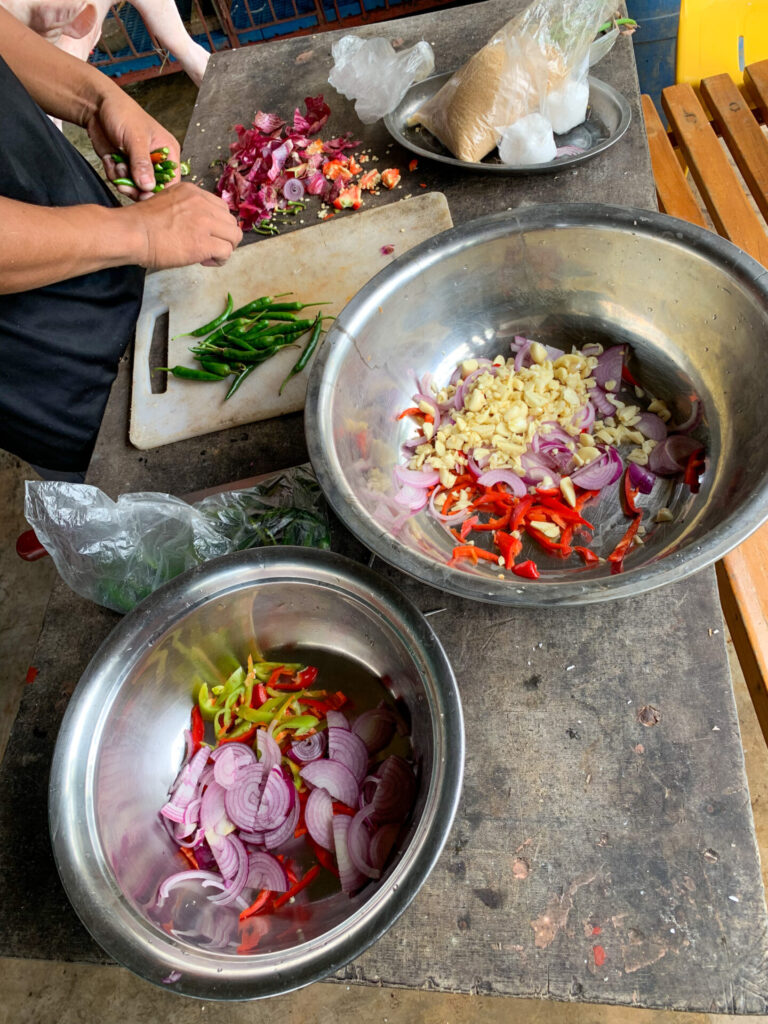
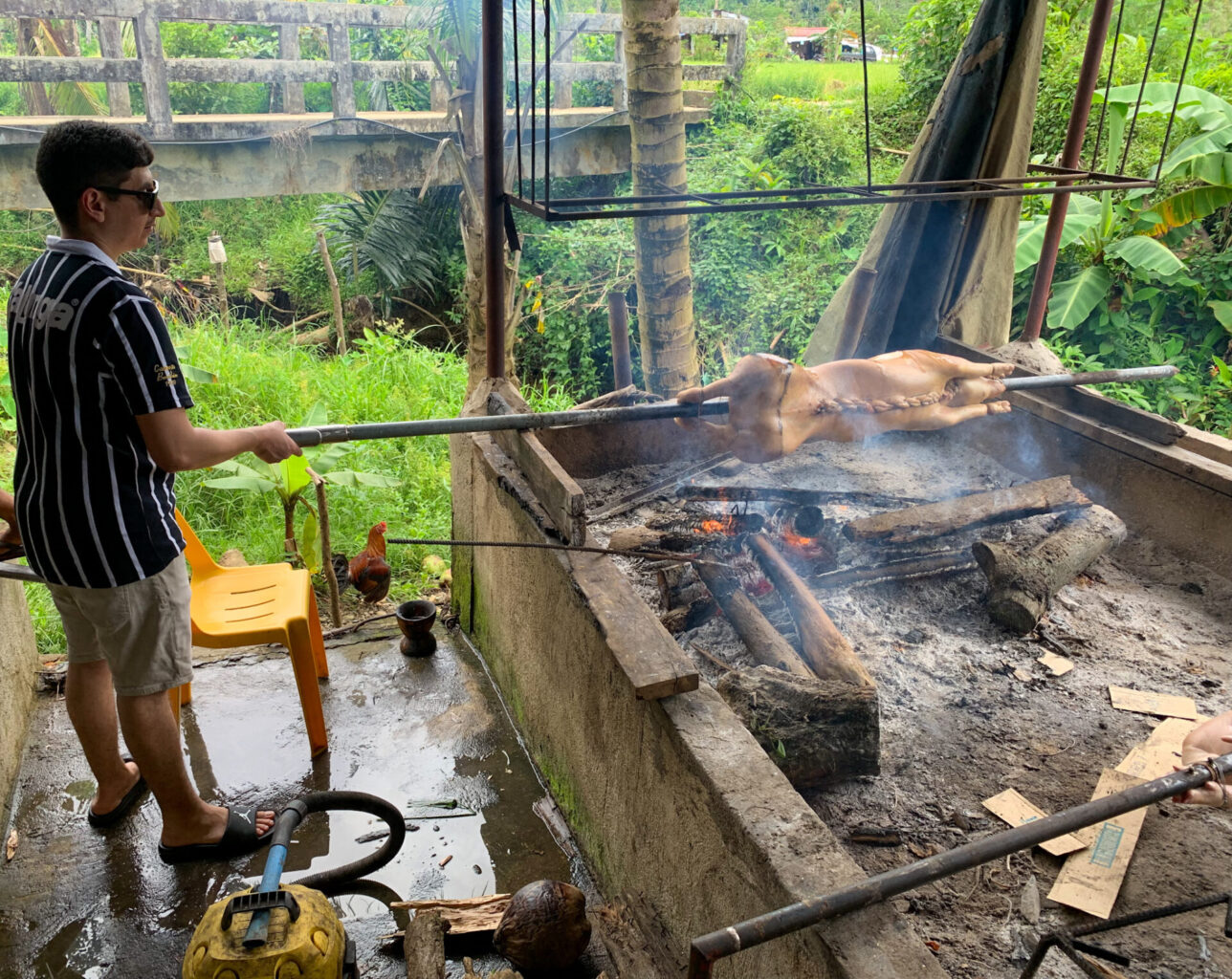
Witnessing the meticulous process was like watching a symphony of fire and flavor. The lechoneros, these Filipino masters of lechon, worked with a practiced ease that bordered on artistry. It was a labor of love, for sure. I witnessed calloused hands wielding cleavers with precision, the rhythmic thwack echoing off the walls, a soundtrack to an epic pig roast.
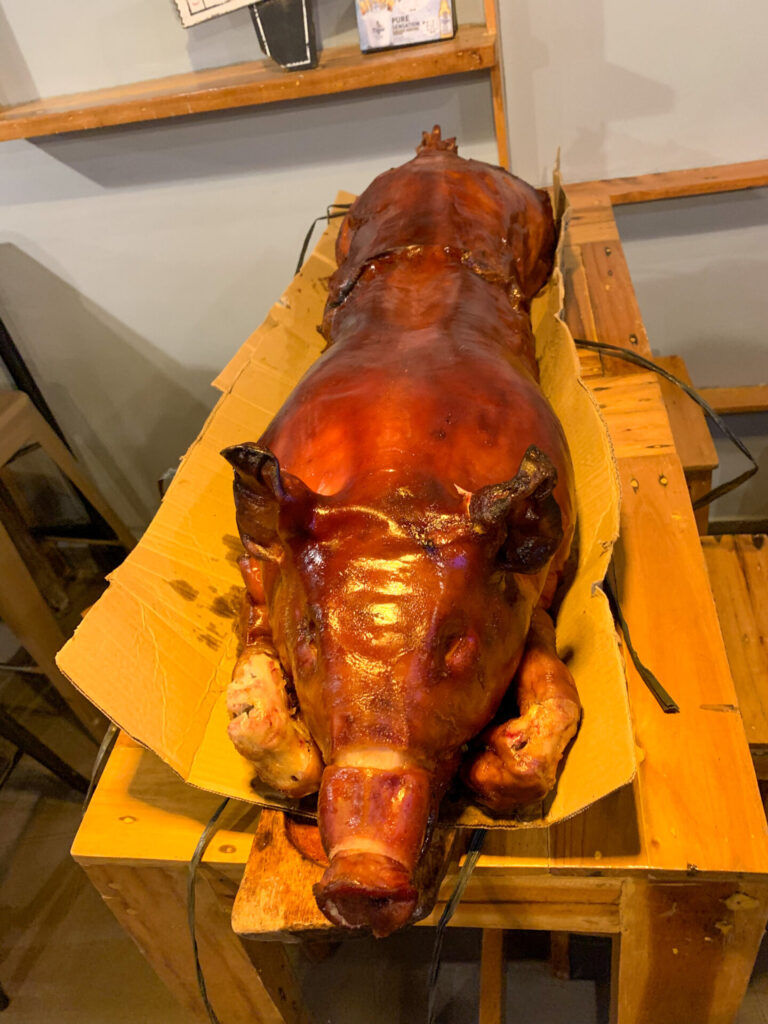
And the price? Let me tell you, for a whole pig and the top-notch cooking, it was a steal. $200 USD for the pig itself, and another $60 for the lechon house to work their magic. Trust me, for that smoky aroma, the glistening, crackling skin, and the juicy, melt-in-your-mouth meat – it’s enough to make you question the majority of your previous pig-related experiences. This, my friends, is lechon transcendence for a price that won’t leave you feeling like you just got roasted yourself.

The Feast: Lechon Takes Center Stage, But the Party Doesn’t Stop There
As the evening unfolded, the birthday celebration took on a life of its own, with more than two dozen guests joining in the fiesta. Amidst the laughter and chatter, the star of the show—the lechon—held court on its own table, drawing eager eyes and rumbling stomachs. Alongside this epic pig, another table was adorned with an incredible spread – pancit noodles for a long life, crispy fried chicken for the win, deep-fried calamari rings that disappeared faster than you could say “masarap” (“delicious” in Filipino), and a sweet and sour fish that added a tangy counterpoint to the smoky goodness of the lechon.
We washed it all down with some ice-cold San Miguels, the conversation flowing faster than the beer. And then, fueled by a combination of good food, good company, and maybe a few too many beers, I even braved the Filipino tradition of karaoke for the first time. What I didn’t expect was that wow, Filipinos sure do love themselves some karaoke. Apparently a good karaoke session is just another essential ingredient in the Filipino party recipe, and surprisingly almost everybody could sing (except for me)!
Experience Lechon for Yourself
So, the next time you find yourself in the Philippines, make sure you try this iconic food. Grab a plate, get ready to get your hands dirty, and experience the magic of lechon for yourself. This, my friends, is a pig roast you’ll never forget.
What about you? Have you had an unforgettable lechon experience in the Philippines? Share your story in the comments below!
One thought on “Lechon: A Pig’s Tale of Fire, Fat, and Filipino Tradition”
Matt
April 26, 2024